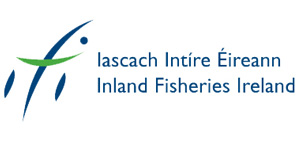Fish Stock Survey of Lough Ree, June 2022
Lough Ree is the third largest lake in the Republic of Ireland, after Lough Corrib and Lough Derg (Plates 1.1 and 1.2, Figure 1.1). It is the middle of the three large Shannon lakes; Loughs Allen, Ree and Derg. The lake is 26km long and 11km at its widest point, has an area of 10,500ha, a mean depth of 6.2m, a maximum depth of 36m and is categorised as typology class 12 (as designated by the EPA for the purposes of the Water Framework Directive), i.e., deep (>4m), greater than 50ha and high alkalinity (>100mg/l CaCO3).
Lough Ree is situated in an ice deepened depression formed on Carboniferous limestone (Charlesworth, 1963). It has a highly irregular shoreline and has many sheltered bays. Glacial drift has resulted in the formation of many islands in the lake (NPWS, 2019). The main inflowing rivers are the Shannon, Inny and Hind, and the main outflowing river is the Shannon (NPWS, 2011).
Water levels in the lake are regulated by the Electricity Supply Board (ESB) and Waterways Ireland. The ESB control water levels on the Shannon system for the purpose of electricity generation at Ardnacrusha hydroelectric power station, which is located at the end of a purpose-built channel (the head-race canal) connected to the River Shannon, approximately 8km below the southern end of Lough Derg. Waterways Ireland controls water levels for navigation purposes. The water level into Lough Ree and discharges from the lake are controlled by a navigational weir and sluice gates at Athlone. The sluices at Athlone weir are operated by Waterways Ireland on daily instruction from the ESB and at high flows the sluice gates are closed to hold water upstream of Lough Ree to minimize flooding along the Lower Shannon (RPS, 2008).
Lough Ree has been designated as a Special Area of Conservation (SAC) and a Special Protection Area (SPA). It has been selected as a SAC/SPA due to the presence of Annex I habitat types, bird species listed on Annex I of the Birds Directive (Council Directive 79/409/EEC) and the otter listed on Annex II of the EU Habitats Directive (Council Directive 92/43/EEC) (NPWS, 2011). The lake is also home to the endangered fish species, pollan (Coregonus pollan) listed on Annex V of the EU Habitats Directive. Pollan are classified as ‘Endangered’ in the Irish Red Data Book (King et al., 2011) and the IUCN Red List of Threatened Species (Freyhof and Kottelat, 2008). This species is endemic to Ireland and is only found in five lakes on the island: Lough Neagh, Lower Lough Erne, Lough Allen, Lough Ree and Lough Derg (Harrison et al., 2010).
Lough Ree is classified as naturally eutrophic (NPWS, 2011b); however, it is vulnerable to artificial enrichment due to agricultural run-off, domestic waste effluent and peat silt in suspension which limits light penetration, thus restricting aquatic flora in the shallow areas of the lake to depths of less than 2m (NPWS, 2019 and 2011). The lake is also being used for leisure activities, particularly leisure boating, which can cause disturbance and some physical damage to marginal wetlands (NPWS, 2019).
Lough Ree is classified as a mixed fishery with good stocks of trout, pike, and coarse fish present (ShRFB, 2010). Local angling clubs are actively involved in fisheries enhancement programmes. An independently operated brown trout hatchery (ShRFB, 2010) ceased operation in 2018. In-stream and bank rehabilitation development works have been carried out by Inland Fisheries Ireland (previously the Shannon Regional Fisheries Board) along the banks of the Hind River and the Inny system. The aim of this work was to enhance the wild brown trout stocks in the rivers and lake. These works and the implementation of pollution controls led to an increase in the trout stocks in the lake (O’ Reilly, 2007).
Colonisation of Lough Ree by the zebra mussel coincided with a reduction in phytoplankton and an increase in water clarity (Minchin et al., 2002). A second dreissenid mussel (Quagga mussel, (Dreissena rostriformis bugensis) has subsequently colonised the lake and has the potential to further influence the ecology of the Lake (Baars, 2022). Asian clam (Corbicula fluminea) was first recorded in the River Shannon in 2013 (Hayden et al., 2013) and was subsequently found in Lough Ree (Minchin 2014) Lough Ree was previously surveyed in 2010 and 2013 as part of the Water Framework Directive monitoring programme (Kelly et al., 2011 and 2014). In 2013 a pelagic and hydroacoustic survey was conducted as part of a PhD study (Morrissey 2019). A survey of the adult fish stocks in Lough Ree was undertaken in 2014 (Delanty et al., 2016). During these surveys, perch, roach, roach x bream hybrids, brown trout, pike, bream, tench, pollan and eels were recorded.
This report summarises the results of the 2022 fish stock survey carried out on the lake using Inland Fisheries Ireland’s fish in lakes monitoring protocol. The protocol is WFD compliant and also provides insight into fish stock status in the lake.
Topics: Lake Surveys 2022 , Lough Ree |
